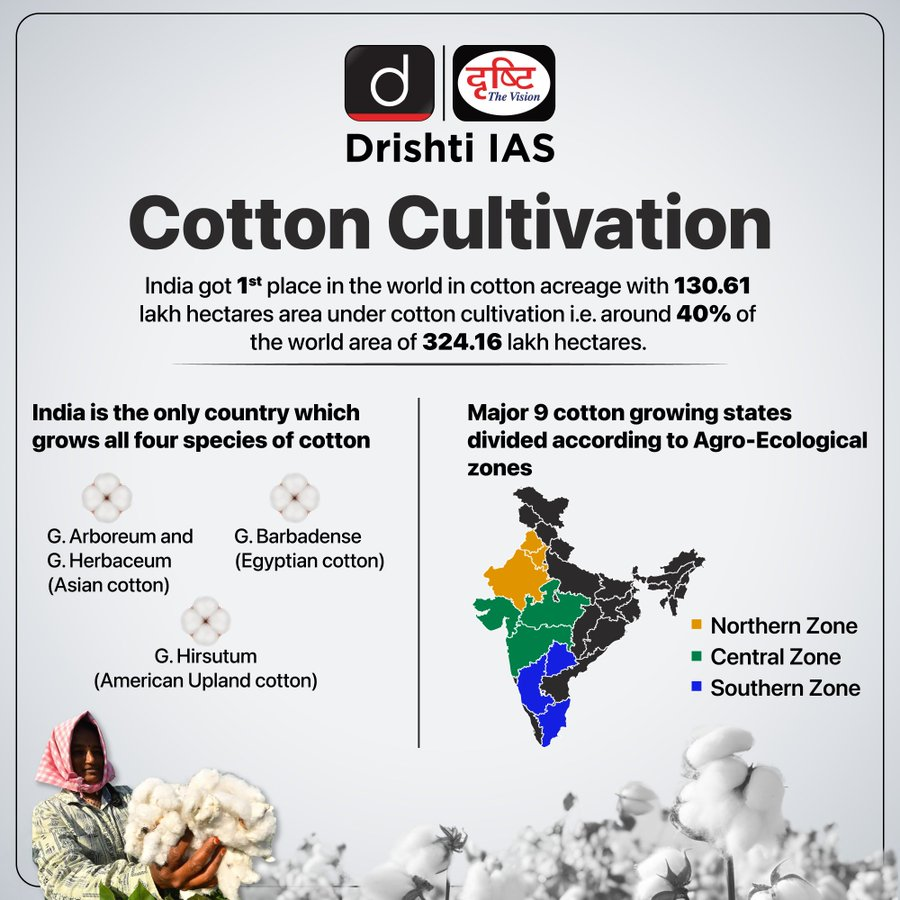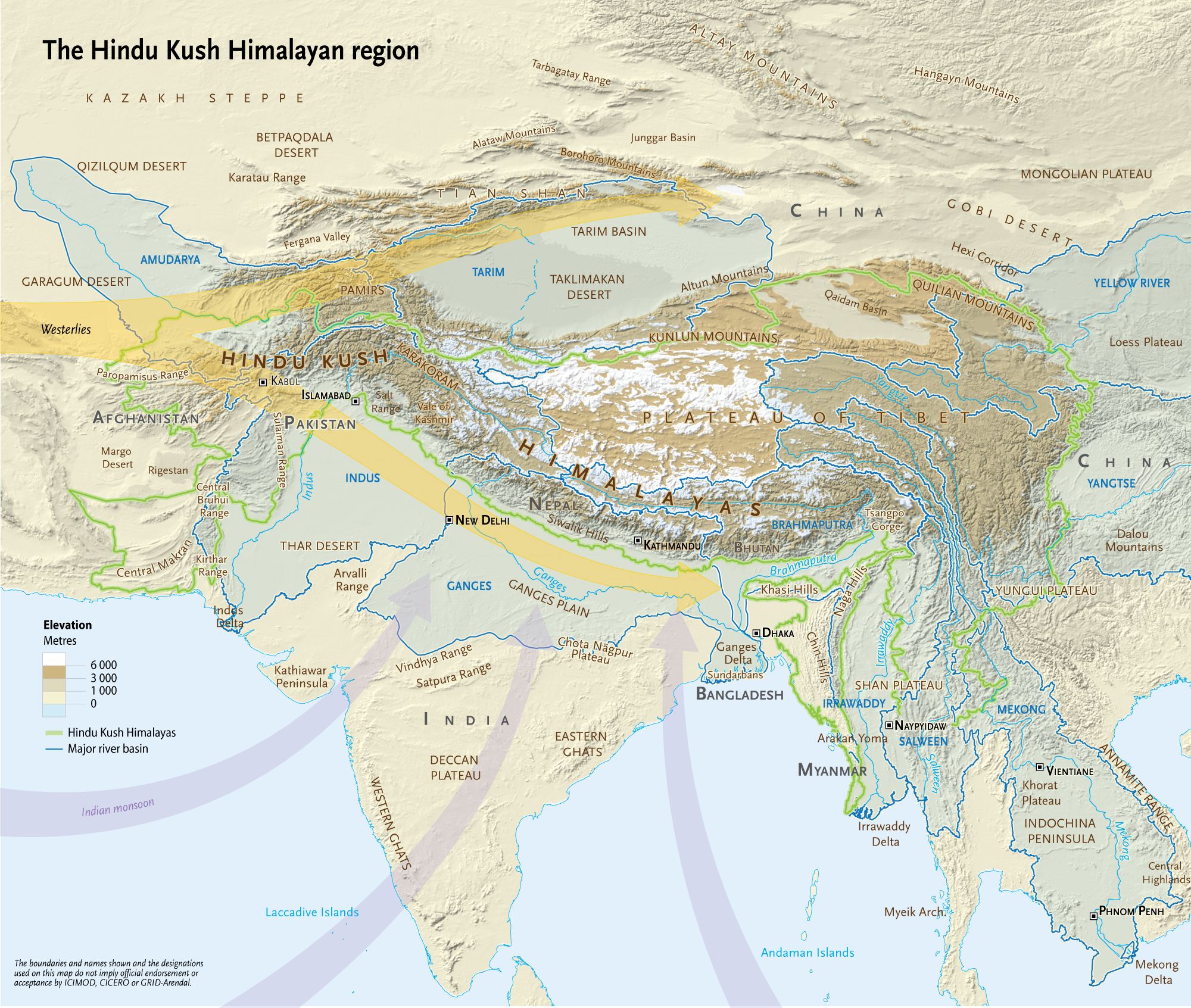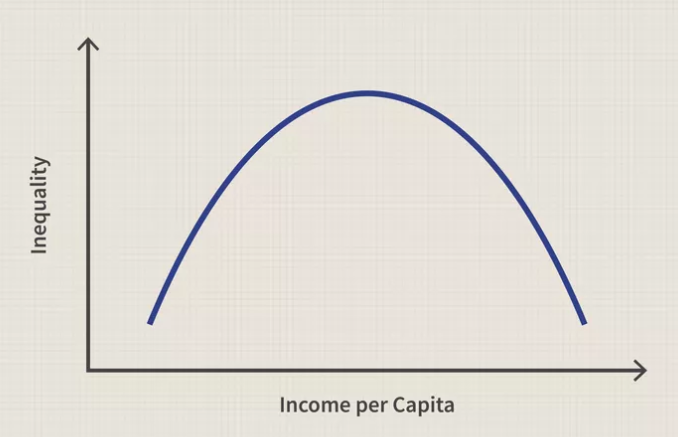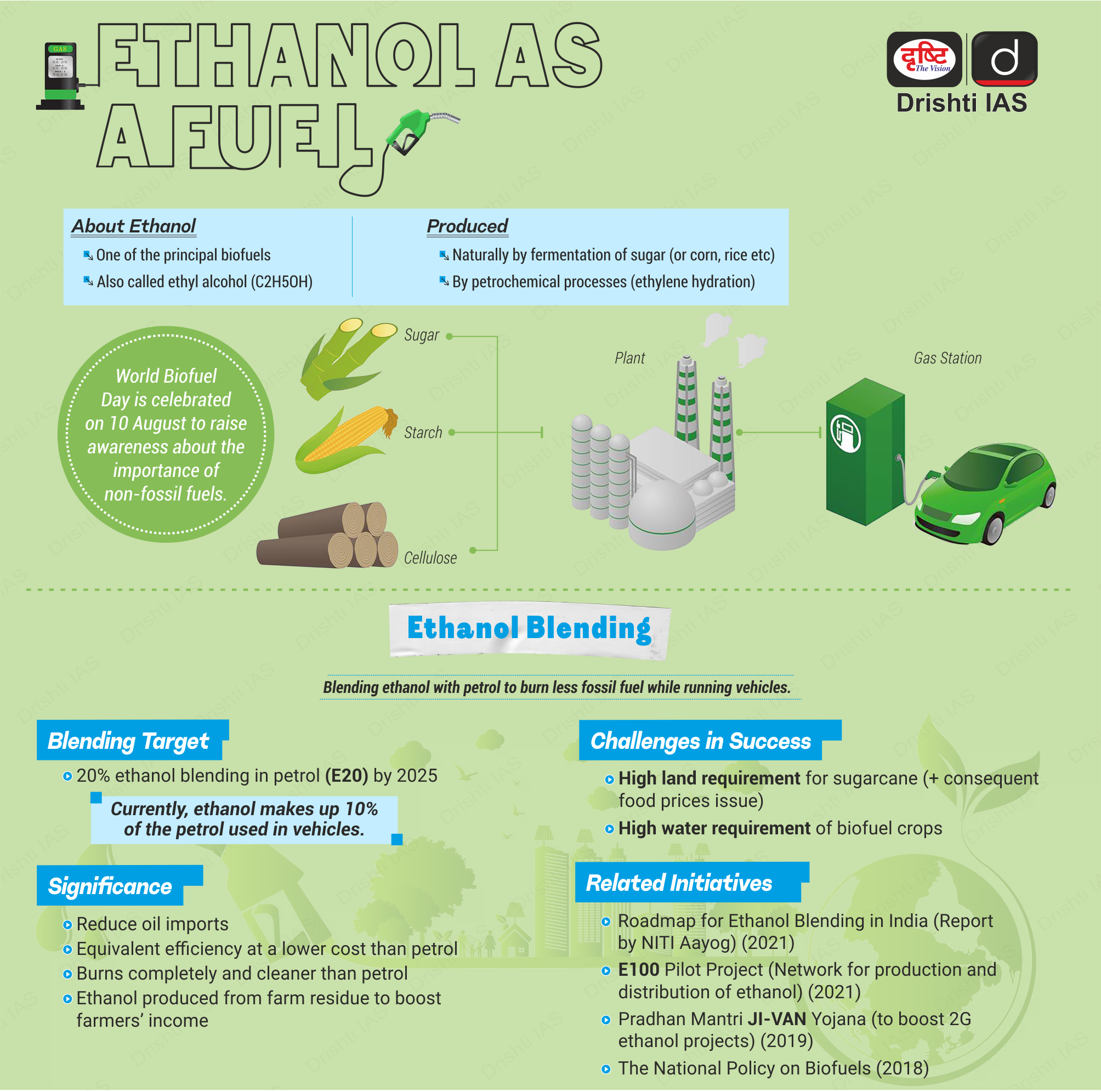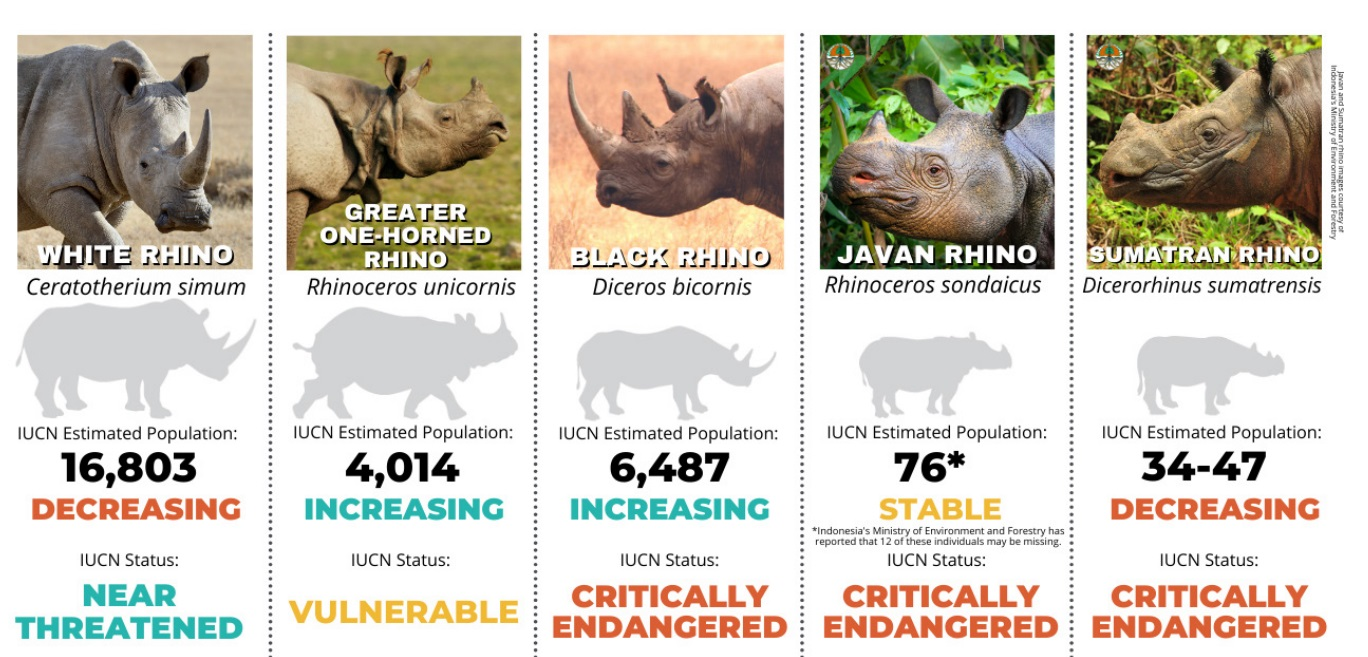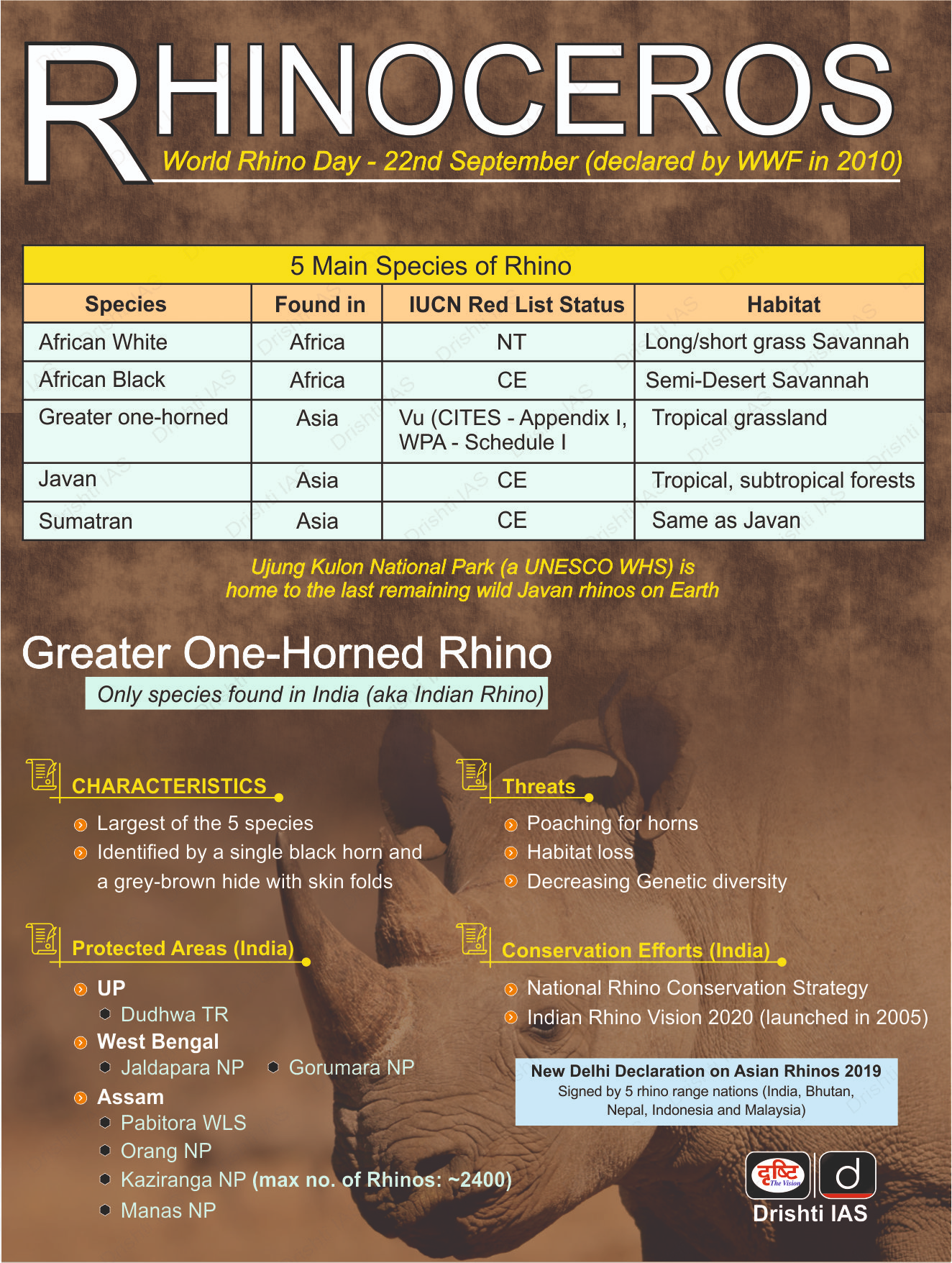Agriculture
Cotton Cultivation in India
For Prelims: Hybrid cotton, Bt cotton, National Food Security Mission (NFSM), Cotton Corporation of India (CCI), Kasturi Cotton, Cott-Ally Mobile App, Committee on Cotton Promotion and Consumption (COCPC), Technology Upgradation Fund Scheme (TUFS), Mega Textile Parks (MITRA), Pink bollworm, Genetically-modified crops
For Mains: Significance of Cotton for India, Issues and Challenges
Why in News?
The data recently released by the Ministry of Textiles shows that cotton consumption by the textile industry from October 2023 to September 2024 is one of the highest seen in this decade.
What are the Key Facts About Cotton Cultivation?
- About:
- Cotton is one of the most important commercial crops cultivated in India and accounts for around 25% of the total global cotton production.
- Due to its economic importance in India, it is also termed as “White-Gold”.
- In India, around 67% of India’s cotton is grown in rain-fed areas and 33% in irrigated areas.
- Cotton is one of the most important commercial crops cultivated in India and accounts for around 25% of the total global cotton production.
- Growing Conditions:
- Cotton cultivation necessitates a hot, and sunny climate with a long frost-free period. It is most productive in warm and humid climatic conditions.
- Cotton can be successfully grown in a range of soil types, including well-drained deep alluvial soils in northern regions, variable-depth black clayey soils in the central region, and mixed black and red soils in the southern zone.
- While cotton exhibits some tolerance to salinity, it is highly sensitive to waterlogging, emphasising the importance of well-drained soils in cotton farming.
- Hybrid and Bt Cotton:
- Hybrid Cotton: Cotton made by crossing two parent strains that have different genetic characteristics. Hybrids are often spontaneously and randomly created in nature when open-pollinated plants naturally cross-pollinate with other related varieties.
- Bt Cotton: It is a genetically modified pest-resistant variety of cotton.
- India’s Scenario:
- Rank in Global Production (November 2023): Globally, India is the largest producer of cotton, while China is the second-largest producer, and the United States is the third-largest producer.
-
Largest Producing Zone (2022-23): Central Zone (Gujarat, Maharashtra, Madhya Pradesh).
Indian Government Initiatives For Development of the Cotton Sector
- Cotton Development Programme Under the National Food Security Mission (NFSM): It aims to enhance cotton production and productivity in major cotton-growing states and is being implemented by the Department of Agriculture & Farmers Welfare in 15 major cotton-growing states from 2014-15.
- Cotton Corporation of India (CCI): It was established in 1970 under the administrative control of the Ministry of Textiles as a Public Sector Undertaking under the Companies Act 1956.
- Its role is to stabilise prices by enforcing price support measures whenever the market prices fall below the government-decided price supports.
- MSP Formula for Cotton: Introduced a formula of 1.5 times the cost of production (A2+FL) for Minimum Support Price (MSP) calculation ensuring the economic interest of cotton farmers and availability of cotton to the textile industry.
- Cotton Corporation of India (CCI): Appointed as a Central Nodal agency for MSP operations when Fair Average Quality grade seed cotton (kapas) fell below the MSP rates.
- Textile Advisory Group (TAG): Constituted by the Ministry of Textiles to facilitate coordination among stakeholders in the cotton value chain to address issues related to productivity, prices, branding, and more.
- Cott-Ally Mobile App: Developed to provide farmers with knowledge about MSP Rate, procurement centers through a user-friendly interface.
- Committee on Cotton Promotion and Consumption (COCPC): To ensure the availability of cotton to the textile industry.
What are the Issues Associated with the Cotton Sector in India?
- Pest Attack: In past instances, the primary factor responsible for the decline of cotton production was the emergence of the pink bollworm (Pectinophora gossypiella).
- When pink bollworm (PBW) larvae invade cotton bolls, it causes cotton plants to produce less cotton and the cotton produced is of lower quality.
- PBW is monophagous (that primarily feeds on a single specific type of food), feeding mainly on cotton, which contributes to the development of resistance against Bt proteins.
- Continuous cultivation of Bt hybrids led to PBW populations developing resistance, replacing susceptible ones.
- Several states like Gujarat, Punjab, Haryana, Rajasthan have over the years experienced heavy infestation of the pest.
- Yield Fluctuations: Cotton production in India can be quite unpredictable due to several factors.
- Limited access to irrigation systems, declining soil fertility, and erratic weather patterns, including unexpected droughts or excessive rainfall, contribute to the uncertainty surrounding cotton yields.
- Smallholder Dominance: The majority of cotton farming in India is carried out by small-scale farmers.
- These farmers often rely on traditional agricultural practices and have limited access to modern farming technologies, which in turn affects overall cotton production.
- Limited Market Access: A significant number of cotton growers in India face constraints in reaching markets and are compelled to sell their harvest at reduced rates to intermediaries.
Way Forward
- Integrated Pest Management: There is a need to advocate for integrated pest management (IPM) strategies that combine natural controls, trap crops, and beneficial insects to reduce pesticide dependency while effectively managing pests.
- Address the Yield Gap: India leads in cotton acreage but lags in yield compared to major producers. Initiatives like the Large-Scale Demonstrations Project under NFSM can promote best practices like High-Density Planting Systems (HDPS) and a value chain approach to bridge this gap.
- Modernisation and Infrastructure Development: Leverage schemes like the Technology Upgradation Fund Scheme (TUFS) and Mega Textile Parks (MITRA) to modernise ginning, spinning, and weaving facilities, enhancing efficiency and global competitiveness.
- Improve MSP Calculation: The recently revised MSP formula (1.5 times the cost of production) ensures a fair return for farmers. Continued refinement based on NITI Aayog recommendations can further strengthen farmer income security.
- Strengthen Market Linkages: Initiatives like a robust procurement system, price stabilisation funds, and robust cotton grading and standardisation mechanisms can help farmers get better prices and reduce exploitation by middlemen.
- Branding and Traceability: Initiatives like "Kasturi Cotton" can create a distinct identity for Indian cotton in the global market, emphasizing quality assurance and traceability. This can attract premium prices and foster trust with international buyers.
|
Drishti Mains Question: Q. Discuss the key challenges faced by the cotton sector in India. Suggest measures to improve the productivity of the cotton sector in India. |
UPSC Civil Services Examination, Previous Year Question (PYQ)
Prelims
Q1. The black cotton soil of India has been formed due to the weathering of (2021)
(a) brown forest soil
(b) fissure volcanic rock
(c) granite and schist
(d) shale and limestone
Ans: (b)
Q2. A state in India has the following characteristics: (2011)
- Its northern part is arid and semi-arid.
- Its central part produces cotton.
- Cultivation of cash crops is predominant over food crops.
Which one of the following states has all of the above characteristics?
(a) Andhra Pradesh
(b) Gujarat
(c) Karnataka
(d) Tamil Nadu
Ans: (b)
Mains
Q. Analyse the factors for highly decentralized cotton textile industry in India. (2013)


Geography
Low Snow Persistence in Hindu Kush Himalayas
For Prelims: International Centre for Integrated Mountain Development (ICIMOD), Ganga, Brahmaputra, and Indus basins, western disturbances Mediterranean, Caspian, Black Seas , winter precipitation , snowfall, Paris Agreement, La Niña and El Niño events,
For Mains: Hindu Kush Himalayas region and related issues.
Why in News?
The recent report from the International Centre for Integrated Mountain Development (ICIMOD) has shown that the snow persistence in the Ganga, Brahmaputra, and Indus basins of the Hindu Kush Himalayas (HKH) has reached record low levels.
- ICIMOD is a regional intergovernmental organisation established in 1983 and working towards a greener, more inclusive, and climate-resilient Hindu Kush Himalaya.
What are the Findings of the Report?
- Global Findings:
- The Amu Darya river basin in Afghanistan reported its lowest snow persistence, the Helmand River, crucial for Iran and Afghanistan's drinking water supply, saw its snow persistence nearly 32% below normal.
- China’s Yellow River basin exceeding normal levels by 20.2%, is influenced by the interaction of cold air from the east asian winter monsoon with moist air from the Pacific Ocean.
- India’s Context:
- The report analysed data from 2003 to 2024, revealing that the Ganga River basin experienced its lowest snow persistence in 22 years, and the Brahmaputra basin recorded a 14.6% decrease in snow persistence compared to normal levels.
- Reason Behind Low Snow Persistence:
- Impact of Weakened Western Disturbances and Global Warming:
- This study reveals that weakened western disturbances from warmer seas in the Mediterranean, Caspian, and Black Seas have reduced winter precipitation and snowfall in the Hindu Kush Himalaya region.
- Additionally, global warming has intensified La Niña and El Niño events, further decreasing the region's snow persistence capacity.
- The 1.5°C global temperature limit set under the Paris Agreement may not be sufficient for the Hindu Kush Himalayan (HKH) region, as this area is expected to experience higher temperature increases than the global average.
- Environmental Degradation:
- Environmental degradation in the HKH region, driven by deforestation, overgrazing, unsustainable land practices, and infrastructure development, is leading to profound impacts such as soil erosion, loss of biodiversity, and water pollution in the region.
- The Proliferation of Invasive Species:
- The proliferation of invasive species such as Cirsium arvense (Canada thistle) and Trifolium repens (white clover) poses a significant threat to native Himalayan species, upsetting the delicate balance of the region's ecosystem.
- Impact of Weakened Western Disturbances and Global Warming:
- Key Recommendations:
- Long-term Strategies:
- This study suggests that reforestation with native species such as Cirsium arvense improves snow retention in the HKH region.
- Enhanced weather forecasting and early warning systems.
- Improved water infrastructure and enact protective policies for snow-receiving areas.
- Community involvement in decision-making along with promoting regional cooperation will help restore the HKH region.
- Climate Change Mitigation:
- Reduce emissions to mitigate rising temperatures and focus on G-20 countries as they are responsible for 81% of global emissions
- Shift away from fossil fuels towards cleaner energy sources.
- Long-term Strategies:
What is Snow Persistence?
- About:
- Snow persistence refers to the duration that snow remains on the ground. When this snow melts, it crucially contributes water to both people and ecosystems.
- Significance
- In the Hindu Kush Himalaya (HKH) river basins, snowmelt represents the largest water source for streams, contributing 23% of the annual runoff across the region's 12 major river basins.
- These river basins provide water to almost one-fourth of the world’s population and are a significant freshwater source for 240 million people in the HKH region.
- In the Ganga River basin, the persistence of snow on the ground is particularly significant because its melt contributes 10.3% of the Ganga's water, whereas glacier melts contribute only 3.1%.
- Similarly, in the Brahmaputra and Indus river basins, snowmelt provides 13.2% and approximately 40% of their respective water supplies, in contrast to 1.8% and 5% from glaciers.
- In the Hindu Kush Himalaya (HKH) river basins, snowmelt represents the largest water source for streams, contributing 23% of the annual runoff across the region's 12 major river basins.
What is the Hindu Kush Himalaya Region?
- Geographical Spans of HKH:
- The Hindu Kush Himalayan (HKH) region spans Afghanistan, Bangladesh, Bhutan, China, India, Kyrgyzstan, Mongolia, Myanmar, Nepal, Pakistan, Tajikistan, and Uzbekistan.
- Third Pole:
- Often referred to as the Third Pole due to its vast ice and snow reserves, it holds immense climatic significance.
- This region hosts the largest concentration of ice and snow outside the Arctic and Antarctica.
- The ice and snow from the HKH region serve as crucial water sources for major rivers, which flow through 16 countries across Asia.
- Key River Systems and their Destinations from HKH:
- South Asia:
- Indus, Ganga, Brahmaputra → Arabian Sea and Bay of Bengal
- Central Asia:
- Syr Darya, Amu Darya → former Aral Sea basin
- East Asia:
- Tarim → Taklamakan Desert
- Yellow River → Gulf of Bohai
- Yangtze → East China Sea
- Southeast Asia:
- Mekong → South China Sea
- Chindwin, Salween, Irrawaddy → Andaman Sea
- South Asia:
|
Drishti Mains Questions: Q. What are the key challenges facing the Hindu Kush Himalaya region, and how can it be protected by following various climate-friendly practices? |
UPSC Civil Services Examination, Previous Year Questions (PYQ)
Prelims
Q. When you travel in Himalayas, you will see the following: (2012)
- Deep gorges
- U-turn river courses
- Parallel mountain ranges
- Steep gradients causing land sliding
Which of the above can be said to be the evidence for Himalayas being young fold mountains?
(a) 1 and 2 only
(b) 1, 2 and 4 only
(c) 3 and 4 only
(d) 1, 2, 3 and 4
Ans: (d)
Mains:
Q.1 Briefly mention the alignment of major mountain ranges of the world and explain their impact on local weather conditions, with examples. (2021)
Q.2 How will the melting of Himalayan glaciers have a far-reaching impact on the water resources of India? (2020)


Indian Economy
Poverty and Inequality Measures in India
Prelims: PM’s Economic Advisory Council (PMEAC), Poverty Line, World Bank, VM Dandekar and N Rath, Alagh Committee, Lakdawala Committee, Tendulkar Committee, Rangarajan Committee, Price Index of Industrial Workers (CPI-IW), Consumer Price Index of Agricultural Labour (CPI-AL), National Sample Survey (NSS), GST, Multidimensional poverty Index, Inflation, Gini coefficient, Household Consumption Expenditure Survey.
Mains: Issues Related to Poverty Estimation and Status of Inequality in India
Why in News?
Recently, PM’s Economic Advisory Council (PMEAC) chief Bibek Debroy pitched for a review of India’s official poverty line and suggested analysing inequality at the state level.
What is the Status of Poverty in India?
- About:
- Poverty refers to a condition in which people or communities lack the financial resources and other essentials for a minimum standard of living.
- In September 2022, the World Bank set the International Poverty line at USD 2.15 using 2017 prices.
- It means that anyone living on less than USD 2.15 a day is considered to be living in extreme poverty.
- Poverty Estimation in India:
-
Study by VM Dandekar and N Rath (1971): It made the first systematic assessment of poverty in India.
- It was based on National Sample Survey (NSS) data from 1960-61.
- They argued that the poverty line must be derived from the expenditure that was adequate to provide 2250 calories per day in both rural and urban areas.
- Alagh Committee (1979): It constructed a poverty line for rural and urban areas on the basis of nutritional requirements.
- Nutritional requirements and related consumption expenditure based on 1973-74 price levels recommended were 2400 Calories for rural areas (Rs 49.1 per capita per month) and 2100 Calories for urban areas (Rs 56.7 per capita per month).
- Lakdawala Committee (1993): It made the following suggestions:
- Consumption expenditure should be calculated based on calorie consumption as earlier.
- State specific poverty lines should be constructed and these should be updated using the Consumer Price Index of Industrial Workers (CPI-IW) in urban areas and Consumer Price Index of Agricultural Labour (CPI-AL) in rural areas.
- Tendulkar Committee (2005): It was set up by the Planning Commission to reassess the methods for estimating poverty and submitted its report in December 2009.
- According to the report, the rural poverty headcount ratio for 2004-05 was at 41.8%, urban at 25.7%, and the pan-India poverty rate stood at 37.2%.
- Rangarajan Committee (2012): It was chaired by former Reserve Bank of India governor C. Rangarajan to review the country's poverty measurement methodology.
- It defined poverty as living on less than Rs 47 per day in urban areas and Rs 32 per day in rural areas.
- It estimated that poverty levels were 19% higher in rural areas and 41% higher in urban areas compared to the Tendulkar Committee's estimates.
-
What is the Need of a New Official Poverty Line in India?
- Outdated Data: India's poverty line estimate based on the Tendulkar Committee (2005) is two decades old.
-
Estimating poverty on the basis of this data is a futile exercise and this grossly underestimates poverty.
-
- Inconsistent with Global Data:
- The World Bank's 2022 report says, India saw "an increase of 56 million poor people" in 2020 (at USD 2.15) due to the pandemic.
- Pew Research Institute's March 2021 report said the number of Indian poor increased by 75 million and added that its middle class shrinking by 32 million.
- But India never acknowledged that poverty increased due to the pandemic or due to pre-pandemic economic shocks of demonetisation of 2016 and GST of 2017.
- Less Realistic Data:
-
The poverty threshold varies from state to state according to people’s social and economic conditions but the current poverty estimation is based on rural, urban and pan-India level.
- This data is less realistic due to inadequate customised measurement and inconsistent data collection methods.
-
- Accuracy Issues:
- There is a lack of comprehensive consumption and inflation data making it impossible to get an accurate picture.
- Indian authorities do not provide inflation data segmented by household income.
- Multidimensional poverty Index (MDPI) evaluates health, education and standard of living across 12 indicators. It relies more on survey-based data rather than actual consumption metrics.
- There is a lack of comprehensive consumption and inflation data making it impossible to get an accurate picture.
- Institutional Issues:
- India’s statistical system, which was applauded globally in the early 1950s, had been criticised by people outside as well as inside the government system in recent times.
- The Ministry of Statistics and Programme Implementation has failed to provide empirical data and struggled to effectively communicate its actions to the relevant stakeholders.
- Example: The findings of the Consumption Expenditure Survey 2017-18 were so abysmal that they were withdrawn by the government.
Government Initiatives to Alleviate Poverty
What is the Status of Inequality in India?
- About:
- In the economy, inequality is the unequal distribution of income and opportunity between different groups in society.
- Income Inequality refers to the extent to which income is evenly distributed within a population.
- Inequality Estimation in India:
- Ways to measure inequality:
- The Gini coefficient (Gini index or Gini ratio) is a measure of income inequality, wealth inequality, or consumption inequality within a nation or a social group.
- A Gini index of 0 represents perfect equality, while an index of 1 implies perfect inequality.
- The Gini coefficient (Gini index or Gini ratio) is a measure of income inequality, wealth inequality, or consumption inequality within a nation or a social group.
- Inequality in India:
-
As per the Household Consumption Expenditure Survey 2022-23, the value of the Gini coefficient for consumption expenditure decreased from 0.283 in 2011-12 to 0.266 for rural areas, and from 0.363 to 0.314 for urban areas in 2022-23.
-
- Ways to measure inequality:
Is a low Gini coefficient Good?
- Generally, developed countries tend to have lower Gini coefficients (e.g., below 0.30), indicating relatively lower income or wealth inequality.
- The Gini Coefficient of developing countries like India tends to be higher. As economies grow and prosper, inequalities widen a bit.
Kuznets curve
- The Kuznets curve is a graphical representation of the relationship between economic development and income inequality.
- It suggests that as an economy develops from a low-income agrarian society to a higher-income industrial and then post-industrial society, income inequality follows a specific pattern.
- The Kuznets curve is often depicted as an inverted U-shaped curve.
- Specific pattern of income inequality:
- Low-Income Stage (Agrarian Economy): At the initial stage of economic development, when a society is primarily agrarian, income inequality tends to be relatively low.
- High-Income Stage (Industrialization): As the economy develops and transitions into an industrial phase, income inequality rises during this phase.
-
High-Income Stage (Post-Industrial): In post-industrial societies, there is more emphasis on service industries, education, and technology where income inequality is expected to decline.
Way Forward
- Institutional Reforms:
- Develop a Communication Strategy: Create a comprehensive communication plan to regularly update stakeholders and the public about MoSPI's activities, methodologies, and data.
- Relevant Data: Conduct periodic reviews of data collection methods to ensure they are up-to-date and relevant to current needs.
- Emerging Issues: Expand data collection to cover emerging issues such as digital economy metrics, environmental statistics, and social welfare indicators.
- Align with Global Practices:
- Consultative Committees: Form consultative committees with representatives from academia, industry, and civil society to provide feedback and guidance on statistical methods and data dissemination.
- Public Feedback Mechanisms: Implement mechanisms for public feedback on MoSPI’s publications and activities to ensure continuous improvement.
Conclusion
Poverty and inequality are deeply interconnected issues that affect societies worldwide, hindering social and economic progress. Addressing these challenges requires a multifaceted approach that includes equitable economic policies, access to quality education, healthcare, and social protection. India needs to address data uncertainties by establishing a more accurate and reliable measure of the poverty line and the number of people living in poverty. A revamping of poverty data for equitable distribution of income will be a step in the right direction.
|
Q. Drishti Mains Question: What are the issues involved in estimation of poverty in India? What need to be done for wider acceptance of Indian statistical data? |
UPSC Civil Services Examination, Previous Year Question (PYQ)
Prelims
Q. Increase in absolute and per capita real GNP do not connote a higher level of economic development, if (2018)
(a) industrial output fails to keep pace with agricultural output.
(b) agricultural output fails to keep pace with industrial output.
(c) poverty and unemployment increase.
(d) imports grow faster than exports.
Ans (c)
Q.In a given year in India, official poverty lines are higher in some States than in others because (2019)
(a) poverty rates vary from State to State
(b) price levels vary from State to State
(c) Gross State Product varies from State to State
(d) quality of public distribution varies from State to State
Ans (b)
Q. The Multi-dimensional Poverty Index developed by Oxford Poverty and Human Development Initiative with UNDP support covers which of the following?(2012)
- Deprivation of education, health, assets and services at household level
- Purchasing power parity at national level
- Extent of budget deficit and GDP growth rate at national level
Select the correct answer using the codes given below:
(a) 1 only
(b) 2 and 3 only
(c) 1 and 3 only
(d) 1, 2 and 3
Ans (a)
Mains
Q. Though there have been several different estimates of poverty in India, all indicate reduction in poverty levels over time. Do you agree? Critically examine with reference to urban and rural poverty indicators (2015)


Agriculture
Ethanol Production
For Prelims: Curb on Sugar Diversion for Ethanol, Ethanol Blended Petrol (EBP), Biofuels, Feedstocks, Crude Oil Import, Food Security, Global Biofuel Alliance
For Mains: Ethanol Production, Indian Economy, and issues relating to planning, mobilization of resources, growth, development, and employment.
Why in News?
Recently, India has achieved higher ethanol production from grains, particularly maize, surpassing that from sugar-based feedstock.
What is Ethanol?
- About:
- Ethanol, also known as ethyl alcohol, is a biofuel produced from various sources such as sugarcane, corn, rice, wheat, and biomass.
- Molasses, a byproduct of sugar manufacture, are generally the main source of production of ethanol (anhydrous alcohol) and rectified spirit. Molasses can be categorised into following:
- A Molasses (First Molasses): An intermediate by-product from initial sugar crystal extraction, containing 80-85% dry matter (DM).
- B Molasses (Second Molasses): Similar DM content as A molasses but with less sugar and no spontaneous crystallization.
- C Molasses (Final Molasses, Blackstrap Molasses, Treacle): The end by-product of sugar processing, containing significant amounts of sucrose (about 32 to 42%). It does not crystallize and is used as a commercial feed ingredient in liquid or dried form.
- The production process involves the fermentation of sugars by yeasts or via petrochemical processes such as ethylene hydration.
- Ethanol is 99.9% pure alcohol that can be blended with petrol to create a cleaner fuel alternative.
- Properties of Ethanol:
- Ethanol is a clear, colorless liquid with a characteristic wine-like odor and pungent taste.
- It is fully soluble in water and most organic solvents.
- In its pure form, it has a boiling point of 78.37 degrees Celsius and a melting point of -114.14 degrees Celsius.
- Ethanol is a combustible material and has a lower combustion temperature than gasoline, making it a cleaner-burning alternative.
- Applications of Ethanol:
- Beverages: Ethanol is the type of alcohol found in alcoholic beverages. It is consumed socially in various forms, such as beer, wine, and spirits.
- Industrial Solvent: Due to its ability to dissolve a wide range of substances, ethanol is used as a solvent in the manufacturing of pharmaceuticals, perfumes, and other products.
- Medical and Laboratory Uses: Ethanol is used as an antiseptic, disinfectant, and preservative in medical and laboratory settings.
- Chemical Feedstock: It serves as a feedstock for the production of various chemicals.
- Fuel: It is used as a biofuel and is often mixed with gasoline to produce ethanol-blended fuels.
What are the Measures to Promote Ethanol Production?
- Feedstock Diversification: Ethanol production in India was mainly based on 'C-heavy' molasses, with a sugar content of 40-45%, yielding 220–225 litres of ethanol per tonne.
- Earlier, India explored direct sugarcane juice for ethanol production, increasing yield and efficiency.
- However, India is using other methods also for increasing production. The country has diversified its feedstocks by including rice, damaged grains, maize, jowar, bajra, and millets.
- It has been seen that Ethanol yields from grains are higher compared to molasses, with rice producing 450-480 liters and other grains 380-460 liters per tonne.
- By 9 June 2024, India produced 3.57 billion litres of ethanol.
- Out of this, 1.75 billion litres were from sugar-based feedstock (sugarcane juice, B-heavy molasses, C-heavy molasses) and 1.81 billion litres were from grain-based feedstock with maize alone contributing 1.10 billion litres.
- Grain-based ethanol now constitutes nearly 51% of the total ethanol production for the current ethanol-supply year (November 2023-October 2024).
- The National Agricultural Cooperative Marketing Federation of India Ltd (NAFED) and the National Cooperative Consumers' Federation of India Ltd (NCCF) are procuring maize to promote its use in ethanol production.
- It has been seen that Ethanol yields from grains are higher compared to molasses, with rice producing 450-480 liters and other grains 380-460 liters per tonne.
- Moreover, Leading sugar companies have installed distilleries that can operate on multiple feedstocks such as rice, damaged grains, maize, and millets throughout the year for continuous production.
- Government's Differential Pricing Policy: The government has fixed different prices for ethanol derived from C heavy molasses, B heavy molasses, sugarcane juice/sugar/sugar syrup, and damaged food grains or rice.
- For example, from 2018-19, the Indian government began fixing higher prices for ethanol produced from B-heavy molasses and whole sugarcane juice/syrup.
- This policy has helped increase the supply of ethanol for the Ethanol Blended Petrol (EBP).
- E20 fuel is a blend of 20% ethanol and 80% petrol. The E20 was launched by the Prime Minister of India in February 2023 in Bengaluru.
- This pilot covers at least 15 cities and will be rolled out across the country in a phased manner.
- Setting up Ambitious Targets:
- India has set up a very ambitious target to increase Ethanol production in the country. For Instance, India plans to start using 20% ethanol blended petrol (E20) from 2025.
- As of 9 June 2024, India achieved a 12.7% ethanol blend with petrol, targeting 15% for the current year.
- Achieving the E20 target by 2025-26 will require 10.16 billion litres of ethanol, according to NITI Aayog estimates.
- India has set up a very ambitious target to increase Ethanol production in the country. For Instance, India plans to start using 20% ethanol blended petrol (E20) from 2025.
- International Commitments:
- At the 64th International Sugar Organization meeting, India reaffirmed the commitment to achieving 20% ethanol blending by 2025-26, predicting that grain-based ethanol production will exceed sugar-based ethanol in the 2023-24 supply year.
- In September 2023, India, the US, the UAE, and Brazil launched the Global Biofuel Alliance. The countries agreed to provide financial and technical support to national programmes to promote the sustainable production and use of biofuels.
- Other Policies:
What are the Benefits and Challenges of Ethanol Production?
- Benefits:
- Reduced Dependence on Oil Imports: India imports a significant portion of its crude oil needs. A NITI Aayog report estimates that a successful ethanol blending program can save the country billions of dollars annually by reducing this reliance.
- Boost to Agricultural Income: Increased ethanol production creates demand for crops like sugarcane and grains used in fermentation. This can lead to higher income for farmers according to a report by the International Renewable Energy Agency (IRENA).
- Greenhouse Gas Reduction: Ethanol absorbs carbon dioxide during its production, offsetting combustion emissions and supporting India's carbon footprint reduction goals.
- Job Creation: The ethanol blending program has the potential to generate millions of jobs in rural areas. New distilleries, expanded sugarcane cultivation, and associated logistics will require a significant workforce, boosting the rural economy.
- Waste Management Solution: The ethanol production can utilize molasses that often creates waste disposal challenges. By converting molasses into ethanol, the program promotes a more sustainable approach to waste management within the sugar sector.
- Benefitting from the By products of Ethanol Production: Apart from being a fuel additive, ethanol production yields valuable byproducts like Distillers' Dried Grain with Solubles, and Potash from Incineration Boiler Ash that find applications across various industries.
-
Distillers' Dried Grain with Solubles (DDGS):
- DDGS is a byproduct of grain-based ethanol production.
- It is the residue left after the starch in grains is fermented and ethanol is extracted.
- DDGS is a valuable animal feed with high protein content and is used to supplement livestock diets.
- Potash from Incineration Boiler Ash:
- The ash remaining after Ethanol Production in the boiler contains up to 28% potash.
- This ash is a rich source of potash and can be utilized as a fertilizer.
-
- Challenges:
- Food vs. Fuel: A major challenge is the competition for feedstocks between food production and ethanol production. According to the Environmental Protection Agency (EPA), corn-based ethanol production can lead to increased food prices and even contribute to deforestation in countries pressured to cultivate more land for crops.
- Land and Water Use: Large-scale ethanol production, particularly from corn, requires significant amounts of land and water. This can strain resources and lead to issues like soil erosion and depletion of freshwater supplies.
- Limited Environmental Benefit: While touted as a renewable fuel, the lifecycle greenhouse gas emissions of corn ethanol can be comparable to gasoline, especially when considering indirect land-use changes.
- Costly Processing: The current methods for processing feedstocks, particularly non-food crops like switchgrass, often require energy-intensive treatments to convert them into usable sugars for fermentation.
- Infrastructure Challenges: Ethanol has a higher water content than gasoline, which can lead to corrosion in pipelines and storage tanks.
- Shortage of Raw Material: Though India has planned to achieve Ethanol Blending by 2025 but it often finds raw material shortage for ethanol production. For Example, due to a lower production of sugarcane, the government in December 2023 banned the use of cane juice and B-heavy molasses for ethanol production.
Way Forward
- Promoting Second-Generation (2G) Ethanol Technologies: The potential of 2G technologies using agricultural waste like straw and bagasse for ethanol production can be harnessed to reduce competition for food crops and promote sustainability.
- India can leverage Global Fuel Alliance to develop and provide its members with technology that is both technically feasible and economically viable for producing ethanol from agricultural waste.
- Developing Alternative Feedstocks and Crop Diversity: India can emulate Brazil's ethanol success by using non-food crops like sorghum and miscanthus to diversify feedstock and enhance food security.
- Financial Incentives for Biomass Cultivation and Farmer Integration: The World Bank reports emphasize the need for financial incentives, contract farming models, and guaranteed buyback programs to encourage farmers to cultivate dedicated biofuel crops and ensure a steady feedstock supply.
- Investing in Research and Development for Improved Efficiency: Focusing on advancements in technologies like cellulosic ethanol production, along with increased research funding and international collaboration, can significantly improve ethanol yields.
- Strengthening Infrastructure and Streamlining Logistics: Data from government reports points to the need for significant investments in storage facilities and transportation networks for ethanol.
- Public-private partnerships and innovative logistics solutions can ensure efficient distribution and program scalability.
|
Drishti Mains Question: Q. Discuss the various measures India has taken to achieve its E20 program. Highlight the challenges associated with this initiative. |
UPSC Civil Services Examination, Previous Year Question (PYQ)
Prelims:
Q. According to India’s National Policy on Biofuels, which of the following can be used as raw materials for the production of biofuels? (2020)
- Cassava
- Damaged wheat grains
- Groundnut seeds
- Horse gram
- Rotten potatoes
- Sugar beet
Select the correct answer using the code given below:
(a) 1, 2, 5 and 6 only
(b) 1, 3, 4 and 6 only
(c) 2, 3, 4 and 5 only
(d) 1, 2, 3, 4, 5 and 6
Ans: (a)
Q. Given below are the names of four energy crops. Which one of them can be cultivated for ethanol? (2010)
(a) Jatropha
(b) Maize
(c) Pongamia
(d) Sunflower
Ans: (b)
Important Facts For Prelims
Rhisotope Project
Why in News?
Recently, South African scientists injected radioactive material into live rhinoceros horns to make them easier to detect at border posts in a pioneering project aimed at curbing poaching.
What is the Rhisotope Project?
- About:
- The Rhisotope Project commenced in 2021 and involves administering measured quantities of radioisotopes into the horns of live rhinos.
- Under the project "two tiny little radioactive chips" were inserted into the horn of a rhinoceros.
- The radioisotopes make the horn "useless" and "poisonous for human consumption."
- The project's final phase includes aftercare and follow-up blood samples to ensure the animals are protected, with the radioactive material lasting five years on the horn, proving more cost-effective than dehorning every 18 months.
- This project aims to use nuclear science in a novel way for conservation.
- This non-lethal yet powerful solution aims to radically reduce the demand from end-users and save rhinos from the very real threat of extinction.
- Impact:
- The procedure, performed on sedated rhinoceroses, is safe for the animals, with a radiation dose low enough not to affect their health or the environment.
- Radioactively treated horns are more likely to be detected at international borders, making it more likely that smuggling syndicates are exposed, prosecuted and convicted under anti-terrorism laws.
- Need:
- Rhinoceros horns are highly valuable on black markets, with prices comparable to gold and cocaine.
- Previous anti-poaching strategies like dehorning and poisoning horns have failed to deter poachers.
- Despite government efforts, 499 rhinoceroses were killed in 2023, an 11% increase from 2022, primarily in state-run parks.
Legal Frameworks for Wildlife Conservation
- Global Wildlife Conservation Efforts to which India is a Party:
-
Conservation Efforts Specifically for Rhinos:
- National Rhino Conservation Strategy
- Indian Rhino Vision 2020
- Translocation: Rhino translocations to Manas National Park set for the beginning of 2023 were rescheduled for 2024 while security measures were reinforced after a poached rhino was discovered in January.
- Rhino Corridor: In 2022, the Assam government finalized the addition of approximately 200 sq km to Orang National Park in north-central Assam, more than doubling the size of this protected area and key rhino habitat.
UPSC Civil Services Examination, Previous Year Question (PYQ)
Prelims:
Q. Consider the following statements in respect of Trade Related Analysis of Fauna and Flora in Commerce (TRAFFIC): (2017)
- TRAFFIC is a bureau under United Nations Environment Programme (UNEP).
- The mission of TRAFFIC is to ensure that trade in wild plants and animals is not a threat to the conservation of nature.
Which of the above statements is/are correct?
(a) 1 only
(b) 2 only
(c) Both 1 and 2
(d) Neither 1 nor 2
Ans: (b)
Q. Consider the following statements: (2019)
- Asiatic lion is naturally found in India only.
- Double-humped camel is naturally found in India only.
- One-horned rhinoceros is naturally found in India only.
Which of the statements given above is/are correct?
(a) 1 only
(b) 2 only
(c) 1 and 3 only
(d) 1, 2 and 3
Ans: (a)


Important Facts For Prelims
Enemy Agents Ordinance
Why in News?
Recently, Jammu and Kashmir's Director General of Police (DGP) proposed using the Enemy Agents Ordinance of 2005, which includes penalties such as life imprisonment or the death penalty, to prosecute militant supporters instead of the Unlawful Activities Prevention Act (UAPA).
What is the Enemy Agent Ordinance?
- About:
- Introduced in 1917 by the Dogra Maharaja of Jammu and Kashmir (J&K).
- The term 'ordinance' reflects the nomenclature for laws used during the Dogra era.
- Post-Partition Evolution: The ordinance was re-enacted in 1948 as a law by the Maharaja in exercise of his law-making powers conferred by Section 5 of the Constitution Act of Kahmir, 1939.
- Legal Basis: The Enemy Agent Ordinance was subsequently protected by inclusion in the Jammu and Kashmir Constitution of 1957, particularly under Section 157.
- Introduced in 1917 by the Dogra Maharaja of Jammu and Kashmir (J&K).
- Constitutional Changes after Abrogation of Article 370:
- Key security legislation like the Enemy Agents Ordinance and Public Safety Act were retained.
- Some laws, such as the Ranbir Penal Code, were superseded by the Indian Penal Code.
- Key Provisions of Enemy Ordinance:
-
Definition of Enemy Agent:
- Enemy agent ordinance targets agents or friends of the enemy rather than the enemy itself. It defines the enemy in the context of the 1947 tribal invasion of Kashmir.
- Anyone who conspires with another person to act intended to aid the enemy is regarded as an enemy agent.
- Punishment:
- Enemy agents shall be punished with death or rigorous imprisonment for life or with rigorous imprisonment for a term which may extend to 10 years and shall also be liable to fine.
- Judicial Validation and Trial:
- In Rehman Shagoo vs State of Jammu and Kashmir Case, 1959, the Supreme Court upheld the enemy agent ordinance.
- The trial under the Enemy Agents Ordinance is conducted by a special government-appointed judge in consultation with the High Court.
- Accused under the ordinance cannot engage a lawyer unless permitted by the court and there is no provision for appeal against the verdict.
-
What is the Unlawful Activities Prevention Act (UAPA)?
- The Unlawful Activities Prevention Act (UAPA), enacted in 1967 and initially aimed at addressing secessionist movements and anti-national activities.
- It has undergone multiple amendments, most recently in 2019. These amendments include provisions concerning terrorist financing, cyber-terrorism, individual designation, and asset seizure.
- The UAPA grants authority to the National Investigation Agency (NIA) for nationwide investigation and prosecution under its purview and imposes severe penalties such as the death penalty and life imprisonment for terrorist acts.
- It allows for the detention of suspects without charge or trial for up to 180 days and denies bail unless the court finds the accused not guilty.
- Terrorism under the UAPA encompasses acts causing or intending to cause harm to individuals, property damage, or threats to the unity, security, or economic stability of India or any other nation.
UPSC Civil Services Examination Previous Years’ Questions (PYQs)
Prelims
Q. Which one of the following is the largest (areawise) Lok Sabha constituency? (2008)
(a) Kangra
(b) Ladakh
(c) Kachchh
(d) Bhilwara
Ans: (b)


Rapid Fire
64th International Sugar Organization Council Meeting
India is hosting the 64th International Sugar Organization (ISO) Council Meeting in June 2024 in New Delhi.
- A workshop titled "Sugar and Biofuels-Emerging Vistas" was organised in which international delegates, Indian sugar mill executives, industry associations, and technical experts participated.
- It discussed the future of the global sugar sector, biofuels, sustainability, and the role of farmers.
- India is the world's largest consumer of sugar and the second-largest producer after Brazil.
- Sugarcane is the 2nd major feedstock for ethanol production (after corn) in the world.
ISO:
- ISO is a United Nations (UN) affiliated body headquartered in London.
- It has about 85 member countries covering 90% of global sugar production and is mandated to bring major sugar-producing, consuming and trading nations together.
- Many member countries of ISO and Global Biofuel Alliance are common and this can be another forum to expand the alliance and promotion of biofuels.
Read more: Sugarcane Production in India, Sugar Industry


Rapid Fire
World Drug Day 2024
Every year International Day Against Drug Abuse and Illicit Trafficking, popularly known as World Drug Day, is observed on 26th June.
- This day was established in December 1987 by the United Nations General Assembly, to raise awareness about the global fight against drug abuse and illicit drug trafficking.
- The theme for 2024 was “The evidence is clear: invest in prevention”.
- The illicit trafficking of narcotic drugs and their abuse is an international problem and as per the United Nations Office on Drugs and Crime (UNODC), around 269 million people worldwide used drugs in 2018.
- Established in 1997, UNODC acts as the Office for Drug Control and Crime Prevention globally.
- In India, according to the Ministry of Home Affairs, Uttar Pradesh, Maharashtra, and Punjab are the top three states with the highest number of FIRs registered under the NDPS Act in three years between 2019 and 2021.
Read more: International Day Against Drug Abuse and Illicit Trafficking
Rapid Fire
Bankim Chandra Chattopadhyay
Recently, the 185th birth anniversary of Bankim Chandra Chattopadhyay was celebrated.
- Born on 27th June 1838, Bankim Chandra Chattopadhyay was an exemplary novelist, social satirist, journalist and the face of the Bengal Renaissance.
- He composed Vande Mataram in Sanskrit, of which the first two verses were adopted as National song, and it was a source of inspiration to the people in their freedom struggle.
- One of his and Indian literature’s finest texts, Anandamath (1882), which is set in the background of the Sanyasi Rebellion (1770-1820), also contains Vande Mataram.
- The Sanyasis rose in rebellion after the great famine of 1770 in Bengal which caused acute chaos and misery.
- He also founded a monthly literary magazine, Bangadarshan, in 1872, through which Bankim is credited with influencing the emergence of a Bengali identity and nationalism.
- His other notable works include Durgeshnandini (1865) Kapalkundala (1866), Krishnakanter Will (1878), Devichaudhrani (1884), Bishabriksha (The Poison Tree), Chandrasekhar (1877) and Rajmohan’s wife.
- He also served as a lawyer and district judge.
- He also served as a lawyer and district judge.
Read more: Bankim Chandra Chattopadhyay


Rapid Fire
Treaty of Versailles
Recently, the anniversary of the Treaty of Versailles was observed which was signed on 28th June 1919, at the Palace of Versailles, in Paris, France.
- It was one of the treaties that officially ended five years of conflict known as the World War I (1914-18).
- The Treaty mentioned the conditions of peace between Germany and the victorious Allies, led by the United States, France, and the United Kingdom.
- The war guilt clause of the treaty forced Germany and other Central Powers (like Austria-Hungary) to take all the blame for World War I.
- This led to the loss of territories, reduction in military forces, and reparation payments to Allied powers by Germany.
- Disintegration of the German population was later used by Hitler to justify German aggression and expansion.
- It further posed severe risks to the entire European economy which led to the Great Depression of 1929.
- The treaty caused resentment among Germans who saw it as a dictated peace and is considered one of the reasons for World War II.
- Also, the treaty led to the formation of the League of Nations.
Read more: World War I



